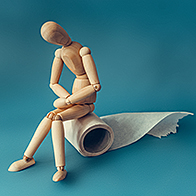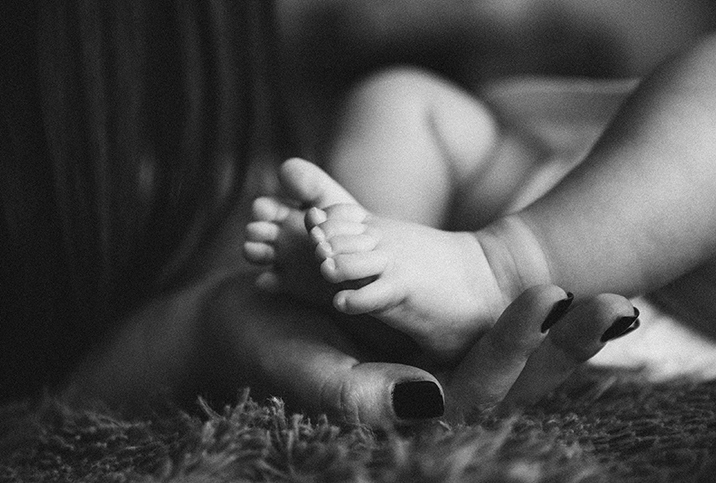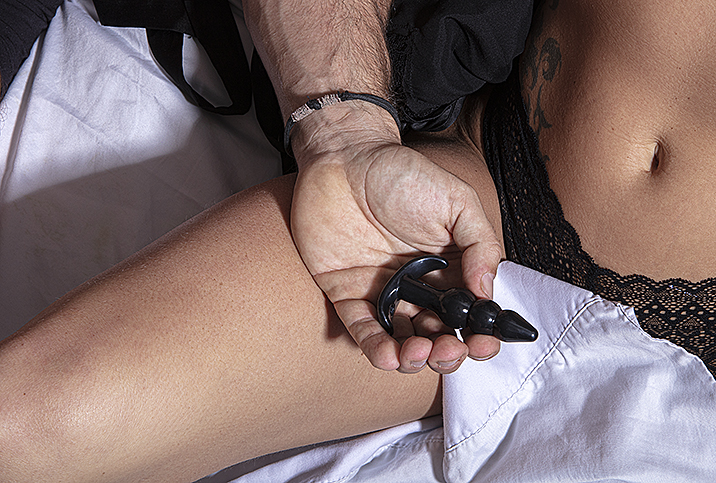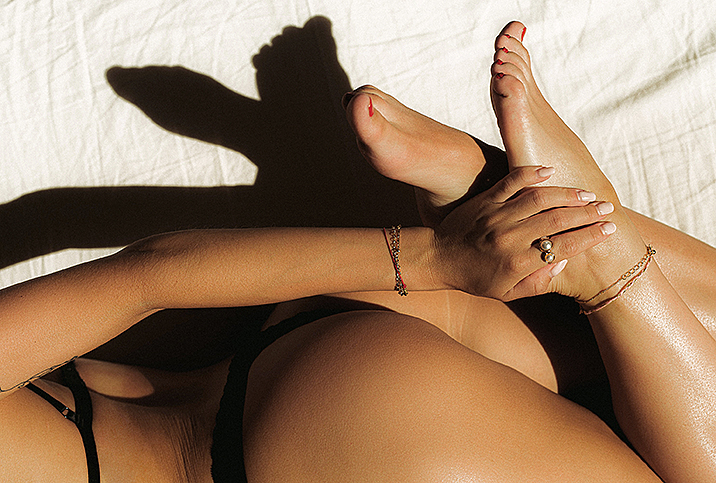Living With a Little Secret: Hemorrhoids Edition

Issues with hemorrhoids, also known as "piles," are pretty common and impact 3 in 4 people at least once in their lifetime, but it's not exactly the talk of the town. Getting information on hemorrhoids—what's normal and how to cope with them—from fellow sufferers may be difficult.
Since your friends and family will likely not divulge their experiences, here's a guide to everything you need to know about living with, and healing from, hemorrhoids.
What the heck are hemorrhoids?
Well, we all have them. Lining the lowest part of the rectum and anus are several pillow-like veins, which, when filled with too much blood, can become swollen. These are hemorrhoids.
There are two types of hemorrhoids: the external variety around the anus, and the internal ones in the lower rectum.
Although rarely dangerous, external hemorrhoids are the more uncomfortable of the two due to being more exposed to possible irritation. If clotting occurs, it can cause sudden and severe pain. While the clot usually dissolves on its own, it can leave excess skin or a skin tag that can become irritated.
Internal hemorrhoids are usually painless but could result in bleeding. However, this type can be irritating if they prolapse or protrude out beyond the anus.
Causes and diagnosis
Everyone is susceptible to this occurrence, but hemorrhoids are almost guaranteed to rear their ugly heads in a few scenarios.
Hemorrhoids appear in part due to excess pressure on the rectum and anus, particularly in upright positions. Straining to go to the bathroom and sitting too long on the toilet are common culprits. Hemorrhoids may also be more common in pregnant women and people who are overweight.
Straining to go to the bathroom and sitting too long on the toilet are common culprits.
If you suspect you've developed a hemorrhoid, rather than guess what's going on, make an appointment with your physician to get the area checked out. Some hesitance is to be expected, but the process of checking for hemorrhoids is fairly routine: Your doctor will probably perform a visual inspection of the lower part of your colon and rectum with an anoscope, proctoscope or sigmoidoscope. And for internal hemorrhoids, the doctor will insert a gloved, lubricated finger into your rectum to feel for growths.
Women can ask their physician to check for hemorrhoids during their annual well-woman exam.
Treatment
Folks suffering from hemorrhoids may experience burning and itching in the anus area. Excessive wiping to try to relieve the itching can irritate the skin, making the hemorrhoids swell, bleed and cause pain.
The following steps can help relieve most mild hemorrhoid symptoms, and help cut down on flare-ups.
Eat your fiber
Eating foods high in fiber and drinking plenty of fluids makes stools softer and easier to pass. For a 2,000-calorie-per-day diet, the recommendation for fiber intake is 28 grams. Look for good sources of fiber in legumes, such as beans and lentils, as well as whole grains like oatmeal, brown rice and many whole fruits and vegetables (not juice).
Practice better toileting
Toilet paper is the number-one aggravator of hemorrhoids after a bowel movement, so don't over-wipe. Instead, switch to specially formulated soothing wipes with anti-hemorrhoid ingredients, like witch hazel or aloe vera. Ensure your choice of wipes does not include alcohol, perfume or other irritants that can worsen your situation. Note that these wipes are often not flushable. Another option for less wiping is the use of a bidet, which would reduce the amount of toilet paper used per potty session.
Stay clean and dry
Shower daily and ensure you dry the anus area with a clean, dry towel by patting gently. You can even use a blow dryer on a cool setting to make sure the area is dry. Shower after working out and do not sit in moist workout clothing for any length of time.
Beat butt itch
Ways to steer clear of butt itch—which can lead to irritation and pain—include avoiding spending all day in Lycra or polyester athleisure wear. Opt instead for breathable cotton underwear and loose-fitting clothing. Avoid thongs—they may tug and pull and cause issues in this area. And make sure you wipe enough after a bowel movement and thoroughly clear the anus of any fecal matter. Look for the toilet paper to be clear when wiping to ensure you have gotten everything—otherwise, you may notice the familiar itch creeping back.
Get active and exercise
Being active and exercising regularly contributes to improved digestive health and smoother bowel movements. Cardiovascular exercises that stimulate blood flow to the rectum and anal areas, and help stimulate hemorrhoid healing, include walking, jogging, doing aerobics and swimming. Horseback riding, biking and strength training are activities that may cause exertion or pressure on the rectum and should be avoided during flare-ups.
Avoid acidic foods
Consuming too many acidic foods, such as tomatoes and citrus fruits, as well as coffee and beer, may lead some people to experience irritation. Dairy is another common cause of stool issues.
Remedies to try
In the hemorrhoid-relief section of your pharmacy, you will likely find medicated cooling sprays, wipes, ointments and even suppositories for the management of most hemorrhoid flare-ups. Ask your doctor for recommendations on these. Typically, sufferers also may find relief with the following:
- Trust in topical relief. Witch hazel is an anti-inflammatory that reduces itching, pain and swelling symptoms. Available at your local pharmacy, witch hazel in liquid form is safe to be applied directly to hemorrhoids. Pour some witch hazel on a cotton pad and apply by pressing gently to the area for a few minutes. You may have to do this several times a day until you get relief. Always wash your hands before and after the application of any hemorrhoid treatment.
- Soak in a warm bath. After each bowel movement, an effective remedy for pain and irritation is to soak in a warm (not hot) sitz bath with added Epsom salts for about 20 minutes. Gently blot dry after.
If these practices, remedies and over-the-counter treatments are not providing relief, talk to your doctor about additional ways you can improve your situation. There are more invasive procedures that can be done to remove hemorrhoids, including undergoing a surgical procedure known as a hemorrhoidectomy. A nonsurgical option would include rubber band ligation.
Ask your physician for a consultation to determine what is the best solution for your condition and to determine your options for relief.




















